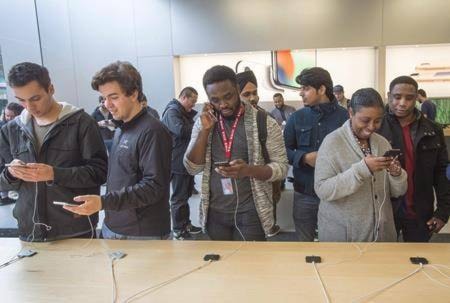TORONTO — The weeks before Christmas 2017 were especially frenzied for Canada’s telecom industry, which waged a brief price war that overloaded selling systems during one of the year’s busiest weekends.
Fast-forward to Christmas 2019, when many Canadians are free of the two-year wireless contracts they signed to get the smartphone of their choice for themselves or as gifts for their loved ones during that hectic period.
But between then and now, the overall price of smartphones on the market has risen dramatically.
“Definitely more than inflation,” says Steve Yang, who analyzes the Canadian communications equipment market for IDC Canada.
Two years ago, Apple’s iPhone X was notable for bursting through the $1,000 price point. Now, Yang says, about 70 per cent of the phones on the market cost more than $1,000.
Put another way, he says the average price of smartphones has increased 14 per cent over those two years, rising to $731 in the third quarter, and a fully-loaded version of Apple’s iPhone has wholesaled for as much as $2,000.
“That’s quite a lot of money,” Yang observes.
“I think (the carriers) want to offer some sort of way to help people to stay in their networks and use different ways to refresh their device.”
One long-held strategy, which carriers have used extensively, is to promote smartphones that cost nothing up front — phones are included with the price of service over two years.
Another way, which hadn’t been used by the main Canadian carriers until the past six months, has been to offer instalment payment plans that separate hardware costs from monthly service fees.
Rogers has been an outspoken supporter of this kind of financing agreement, which it began to offer in the summer about the time it became the first Canadian national carrier to offer wireless data plans that don’t charge overage fees.
“Consumers from around the world have enjoyed the benefits of device financing for some time and Canada is one of the last countries to adopt this model,” Brent Johnston, president of Rogers Wireless, said in a recent statement.
So far, however, Rogers, Bell and Telus continue to offer customers a variety of payment models, some of which don’t include equipment financing plans or equipment subsidies.
For example, customers may be enticed by reduced monthly fees — with the condition that the smartphone be returned in good working condition at the end of the two years, or be subject to an additional fee.
Paul McAleese, president of wireless Shaw Communications, says its Freedom Mobile service has taken a different approach from the Big Three because its customers value having a straightforward choice to make.
“Rather than have a rate plan with an additional monthly payment required, and then perhaps a balloon payment at the back end, customers have told us that they’d like it all built into one, simple transparent payment (as Freedom does),” McAleese says.
He added that Apple — which IDC says accounts for half of the installed base in Canada — has pulled back on some of its wholesale pricing since the third quarter ended in September.
“We’ve seen parallel price reductions on Android devices, from all the major manufacturers, over the last three or four months as well,” McAleese said
“We just saw a level of consumer push-back, globally, that sent a very clear message to the manufacturers — and they responded, I think, quite sensibly.”
